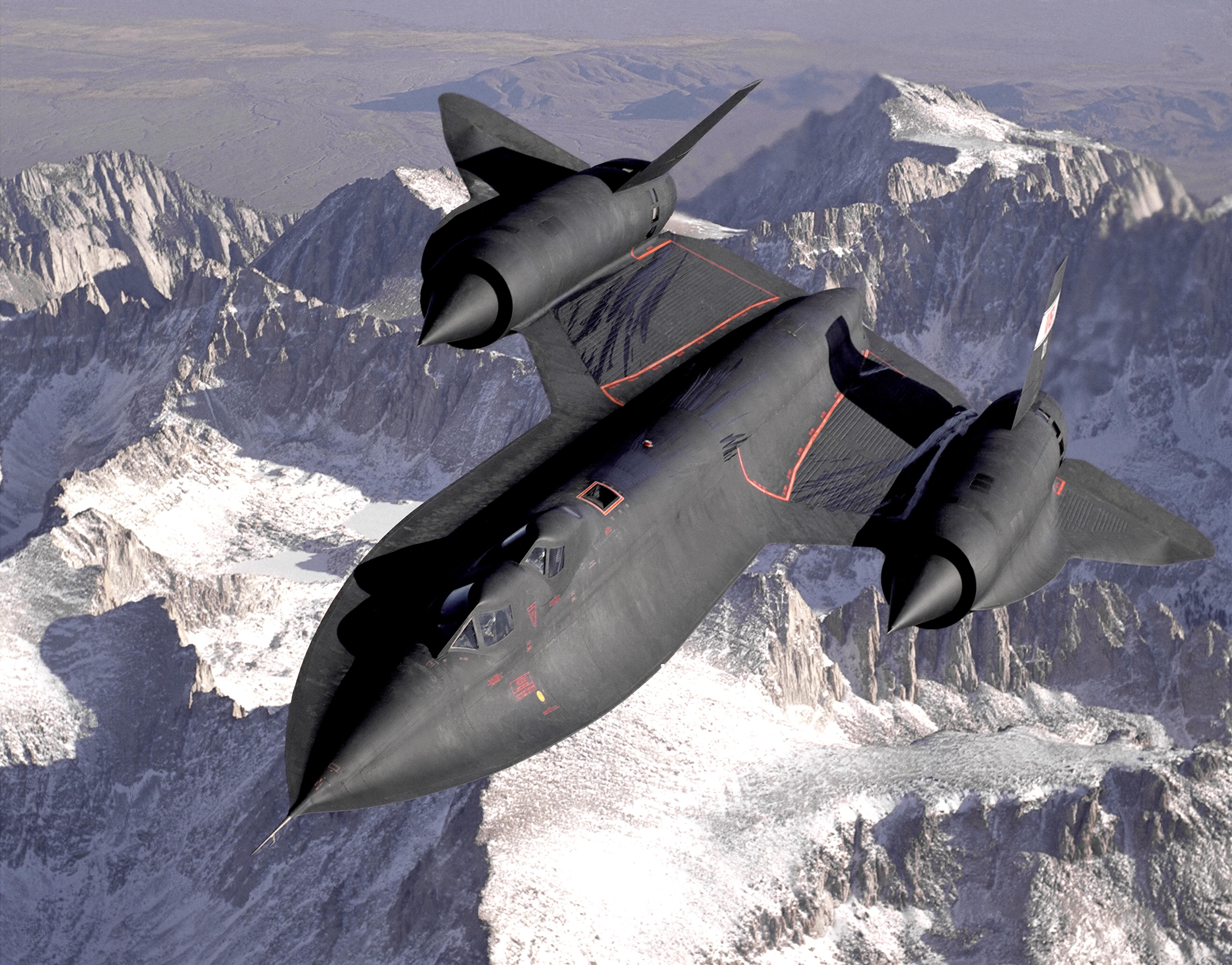 The SR-71B Blackbird, a trainer version of the SR-71. Note the dual cockpit to allow the instructor to fly the plane.
The SR-71B Blackbird, a trainer version of the SR-71. Note the dual cockpit to allow the instructor to fly the plane.The SR-71 Blackbird is currently the 2nd fastest plane in the world, next to it's predecessor, the A-12, which can reach speeds up to 3.35, while it is only capable of reaching Mach 3.2+. It was Designed by Clarence 'Kelly' Johnson and produced by Lockheed Skunk Works, and flies at the edge of Space doing reconnaissance missions over Russia during the Cold War. Due to its high speed and amazing altitude, it could easily evade surface-air missiles (SAM). As a result, no Blackbird was lost to enemy action, though 12 of the 32 were lost in accidents. The Blackbird had been so effective that it was brought back out of retirement in the 1990's but was permanently retired in 1998.
The secret of the SR-71's high speed lies in its engines, and material used for its structure. Of course, they do not come cheap military wise. The Pratt & Whitney J58-P4 engine used on the Blackbird was the only military engine designed to operate continuously on afterburner. Also, incredibly, the J58 engine became more efficient when air speed increases, whereas conventional jet engines loses efficiency as the plane speeds up.
When the Blackbird reaches Mach 3, the friction between its surface and the air is so much that the heat generated could actually melt the surface of the aircraft. That is not the case when 85% of the surface of the Blackbird is made of titanium, while 15% of it is made of composite materials. This was a first in the airplane industry. The setback of using titanium is that is was extremely scarce, and very expensive. Additionally, much of the titanium sent to Lockheed to make the Blackbird was imported from the Soviet Union. Making it worse, 80% of the titanium initially delivered to Lockheed had to be rejected due to metallurgical contamination.


No comments:
Post a Comment